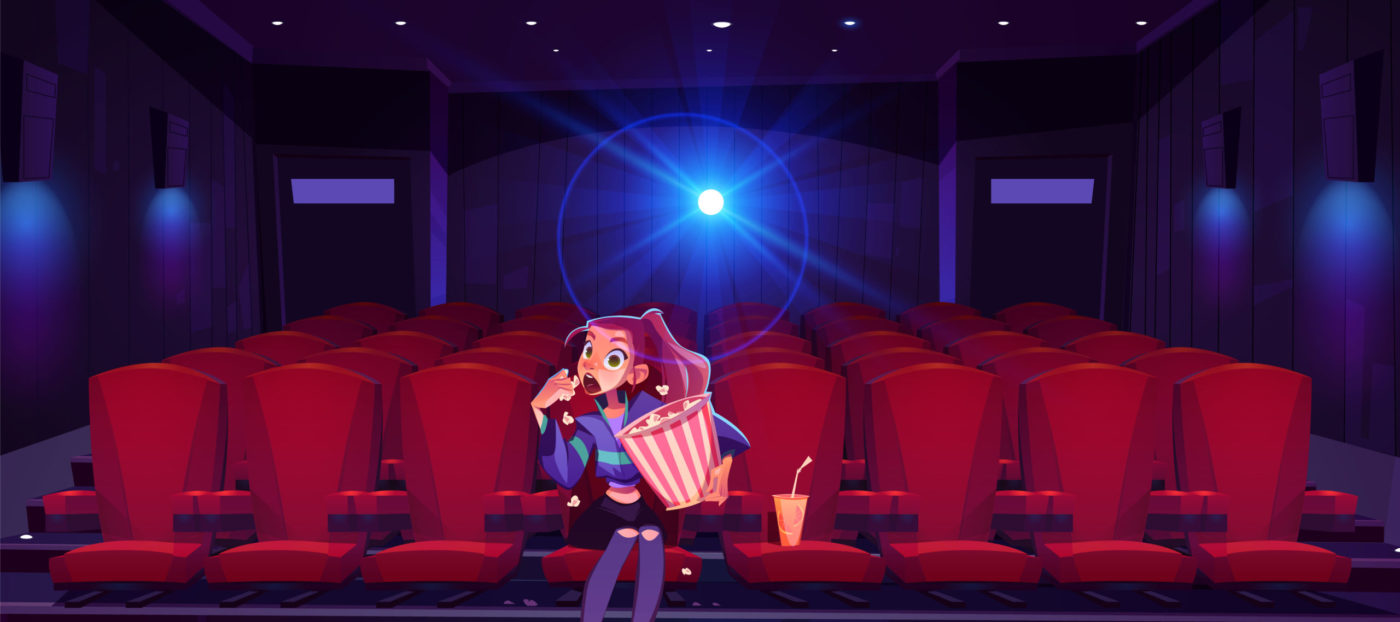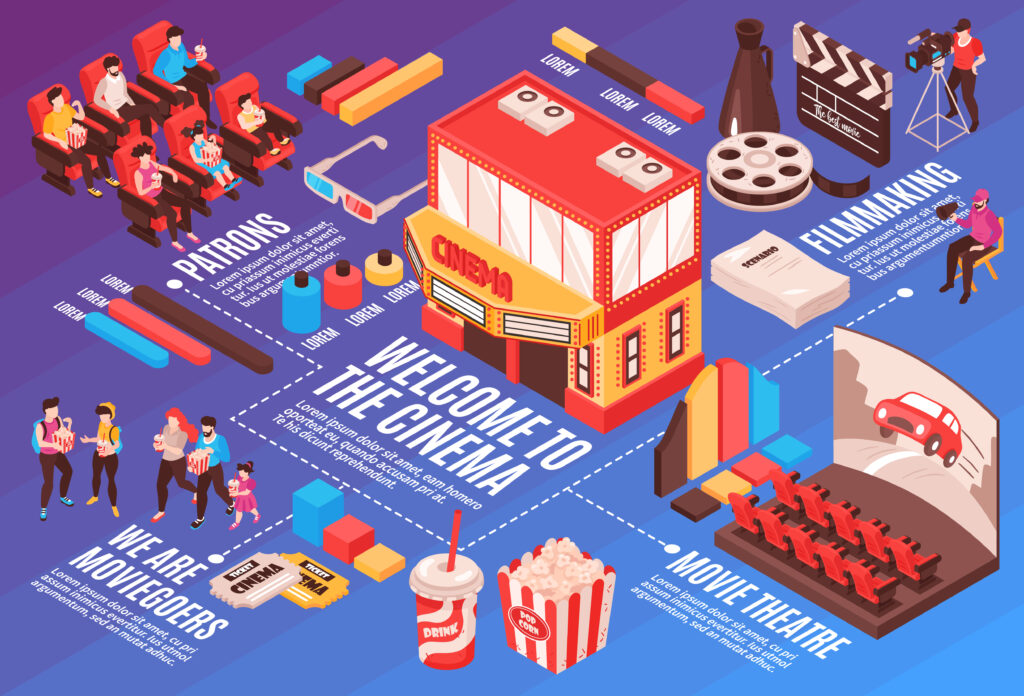M+E Connections

Theaters Need to Get Creative
Story Highlights
They were back. Nearly 3,500 theater owners from 80 countries cheering, clapping as studio executives said they had learned their lesson and were going to put their new, exciting, innovative content in their 200,000 plus (sub-6,000 in the U.S.) … first.
With very few exceptions, the new/exciting films highlighted were good franchise extensions the attendees and their audiences could recall from the old days.
Thomas Rothman, Sony Pictures Motion Picture Group chair-CEO, emphasized one fact that is decidedly true: “True movie stars matter more than ever, they are just more rare than ever.
Streamers don’t create movie stars; only global hit movies do.”
And CinemaCon had more than its fair share of movie stars — and stalwart producers — introducing the tentpole productions they can expect to show in the months ahead to put seats in their seats.
 The truth is, we don’t think there’s a star, producer or any member of a production team who doesn’t prefer to have his/her film shown in a theater.
The truth is, we don’t think there’s a star, producer or any member of a production team who doesn’t prefer to have his/her film shown in a theater.
Seeing a film at home, even with a great Dolby sound system and large flat screen, just isn’t the same as seeing it in darkened room, in an expensive seat with 50-100 strangers eating expensive popcorn with awesome Dolby Atmos sound and immersive video.
We did that twice this past year; and the rest of the time, we simply waited until attendance ran out of gas and the studio needed to capture more eyeballs (and dollars) and offered it on their or someone else’s streaming service.
Only Tom Cruise had the juice to tell Paramount that his films had to appear first in movie houses and the event’s attendees went wild when the company showed the 20-minute trailer of the seventh chapter of his franchise, Mission Impossible: Dead Reckoning.
He’s so notoriously pro-theater he even snuck into a theater in London to watch Christopher Nolan’s Tenet in between MI takes, even though it had a day/date release despite Nolan’s protestation.
Of course, Warner Bros. Discovery’s CEO had a different message at this year’s CinemaCon, saying that the organization now believes in full windowing. Having cut his teeth on reality TV (Discovery), he told the audience the company plans to have more than 20 films which will appear first in movie houses before they are released by their Max streaming service.
Despite the controversy surrounding the film’s lead, he did screen The Flash to attendees as well as have Margot Robbie, Ryan Gosling, and Oprah Winfrey on the stage to promote their respective projects, Barbie and The Color Purple.
Universal showed their commitment to the theater owners with Nolan’s Oppenheimer, which everyone is counting on to attract seat fillers worldwide.
Keeping the company at the forefront of the theater-owning audience, Universal also unveiled the first half (second in 2025) of Vin Diesel’s franchise, Fast X. With a budget of $340 million, both parties are hoping for a high-octane hit with movie goers everywhere.
We agree with the assessment by North American Theatre Owners’ (NATO) outgoing boss John Fithian that massive budget films can’t deliver the ROI needed but the vast majority (80-plus percent) of the creative content produced isn’t a tentpole.
Apple highlighted its commitment with an agreement with Sony for theatrical windows with Ridley Scott’s epic Napoleon as well as Martin Scorsese’s Killers of the Flower Moon.
We may not want to go to a movie house for them, but we do want to see them.
It’s true, we don’t understand Netflix’s Ted Sarandos, co-CEO’s recent statement, “Driving people to the theater is not our business,” because unless we’re mistaken, the company still owns Hollywood’s historic Grauman’s Egyptian Theater.
But Michael O’Leary, incoming NATO CEO and formerly with Motion Picture Association (MPA) might be a little more willing to encourage more movies for large and small screens, helping the entire industry.
 Even though global ticket sales have declined since 2002 (well before streaming) NATO officers and members at CinemaCon like to say that the market is bouncing back, and people are eager to put their seats in increasingly expensive seats.
Even though global ticket sales have declined since 2002 (well before streaming) NATO officers and members at CinemaCon like to say that the market is bouncing back, and people are eager to put their seats in increasingly expensive seats.
But that doesn’t matter to the owners of the 5,000 US and 200,000 global theater owners because they’ve gotten creative too with things like variable price seating — it works on airplanes — and increasingly expensive popcorn (and other concessions).
It’s probably not quite the same as being in 1st or business class but it beats being seated over the wing and seeing … the wing.
In addition, you probably get a better grade of popcorn and butter or at least it will be fresher.
But yes, what studios and project owners very clearly understand is that they have to make money — hopefully on every film they release — and do it every way possible.
That’s tough to do, even with a film like Oppenheimer that cost an estimated $100 million and will need to gross at least $400 million worldwide to produce a profit.
That includes China’s 82,000 screens, the largest box office country in the world, which has only slightly reopened its movie houses to American films and with a lot of restrictions.
Even with screening commitments around the globe a $100 million production budget is only the start and as any decent accountant will tell you when costs go up, profits come down.
Studios fully understand that “make it, they will come” only works in fairy tales (or in movies). Even if only half of the films are profitable at the end of the day, they still build awareness, excitement around the ones they release.
That includes having Nolan, Diesel, Oprah, Scorsese, DiCaprio and every director/actor appear at CinemaCon, film festivals, endless personal interviews, grand openings and major events. In addition to trailers/ads everywhere, studio marketing folks are great hyping the project in every corner of the social universe.
If it’s a good movie they promote it hard. If it’s not so good they promote it harder because they know it’s all about perceived value and will help them draw more subscribers when they release it on their streaming service.
While very few films today are produced on 35mm film, there are print costs — encoded digital print copies on encrypted hard drives with complex permission programming that controls when/where they can be shown and how often.
Maybe they’ll be distributed from the cloud, but accounting is still … paranoid/nervous. In addition to residuals all around as income rolls in, there is also the cost of borrowing money (interest, brokerage fees) and studio overhead.
According to film industry researcher, Stephen Follows (stephenfollows.com) a $100 million-plus Hollywood blockbuster will really cost an average of $417 million to make.
That means stuffing lots of seats to reach profitability.
Domestically, studios average 53 percent of the gross and 41 percent of the international gross. Theaters keep the rest and yes, they also keep all the profit from the sticky popcorn, sugar water and stuff they convince you need to really enjoy the movie.
That’s why the 200,000 plus large and small movie house owners want as big a theatrical window as possible, especially for tentpole films like those featured at CinemaCon.
The problem is studios can’t afford to make a lot of expensive barn burners every year. Theater folks aren’t giddy about mid-budget projects ($50 million-$100 million) and ignore low-budget films (sub-$50 million).
Small chains and indie theaters love them and would like to have a theatrical window but know that people who really like to see a movie in a theater, the way the director wanted it to be seen, will come in and enjoy the experience.
 The problem for the entire movie house industry is that those dedicated moviegoers have been — and are — dwindling.
The problem for the entire movie house industry is that those dedicated moviegoers have been — and are — dwindling.
Folks at CinemaCon were right when they said, “People need to escape, to be inspired.”
The problem is that going to the movies is a planned event, not a “what the hell, let’s go to the movies.” Whether it’s coming home from a tough day in school, a rotten day at work or simply yardwork; folks simply want to unwind and let the mind go somewhere (anywhere) else.
Kicking back in a chair, going from service to service/movie listing to movie listing till you find something/anything that strikes your fancy is so much easier, even a little therapeutic.
It may not be a big screen, but it’s big enough. It may not be perfect Dolby Atmos, but it’s good enough. It may not be the ultimate experience but…yeah, it’s good enough!
Studios, directors, actors and crews can’t do all the heavy digging.
Theaters must do more than just raise prices, offer preferred seating options and give folks more expensive “experiences” because today’s entertainment consumer has choices … 100s of them.
And the popcorn is fresher!
Andy Marken [email protected] is an author of more than 800 articles on management, marketing, communications, industry trends in media and entertainment, consumer electronics, software, and applications.









